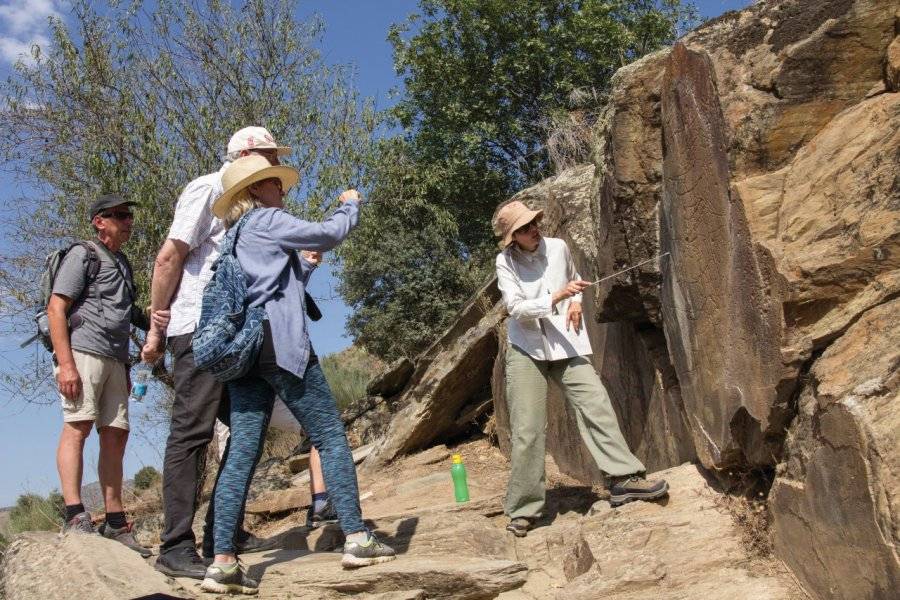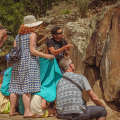CÔA VALLEY ARCHAEOLOGICAL PARK
Sublime site classified as a UNESCO World Heritage Site for its open-air rock art. Can only be visited by reservation.
Portugal's least-known UNESCO World Heritage site. Its distance from the coast and the fact that reservations are essential probably contribute to this. Here, it's possible to see some of the finest and most numerous open-air rock engravings in Europe, dating back over 25,000 years. The rock art of the Côa Valley was discovered in the early 1990s and covers an area of over 200 km2.
Four sites can be visited:
Canada do Inferno. A 2-hour 4x4 tour from the Museum, followed by a 1 km walk, reveals engravings from the Paleolithic period, as well as works engraved on the surface of rocks during the 18th century. It was here that the first engravings were discovered in 1991, including a representation of ibex that has become the park's symbol.
Ribeira de Piscos. A little further on, the visit will take you a good 3 hours from the Museum, a 4x4 journey and a walk of around 2 km. A very special site, due to the very rare representations of European Paleolithic art and painted motifs recently discovered in a rock shelter. In particular, a remarkable human figure from 15,000 years ago.
Penascosa. This site, along the Côa below the village of Castelo Melhor, is more accessible and set in an unrivalled landscape. It is known for its representative and easily interpreted works dating from the various artistic phases of the Côa valley, between 30,000 and 12,000 years ago. From the Castelo Melhor reception center, 1h30 visit by 4x4 and a walk of around 200 m.
Fariseu. This site, accessible by solar boat from the pier on the Canada do Inferno site (GPS: N 41º 03' 26''; W 7º 06' 46''), played a fundamental role in demonstrating the existence of human occupation in the region and the antiquity of its Paleolithic art preserved on rocks in the open air. In 2020, an engraving depicting a 3.5-metre-long aurochs was discovered here - the largest known Paleolithic engraving in the world.
Did you know? This review was written by our professional authors.
Members' reviews on CÔA VALLEY ARCHAEOLOGICAL PARK
The ratings and reviews below reflect the subjective opinions of members and not the opinion of The Little Witty.














Paysage impressionnant.
Les passerelles sont fortement recommandées, mais n'oubliez pas de porter des chaussures confortables et d'apporter de l'eau, car il y a beaucoup de marches. ....
Le musée est consacré à l'art rupestre de la vallée de Côa et possède une vaste collection de gravures paléolithiques, parmi les plus anciennes connues en Europe. L'architecture du bâtiment, intégrée au paysage, offre une visite immersive qui allie culture, histoire et nature.
Les expositions sont bien organisées et didactiques, permettant une compréhension approfondie du contexte historique et archéologique des gravures. Le musée utilise des technologies interactives pour enrichir l'expérience, la rendant accessible aussi bien aux spécialistes qu'au grand public. De plus, la vue panoramique sur la vallée est époustouflante et complète la richesse du contenu de l'exposition.
C'est un lieu incontournable pour tous ceux qui veulent comprendre l'importance et la valeur historique du patrimoine portugais, offrant un véritable voyage dans le temps.